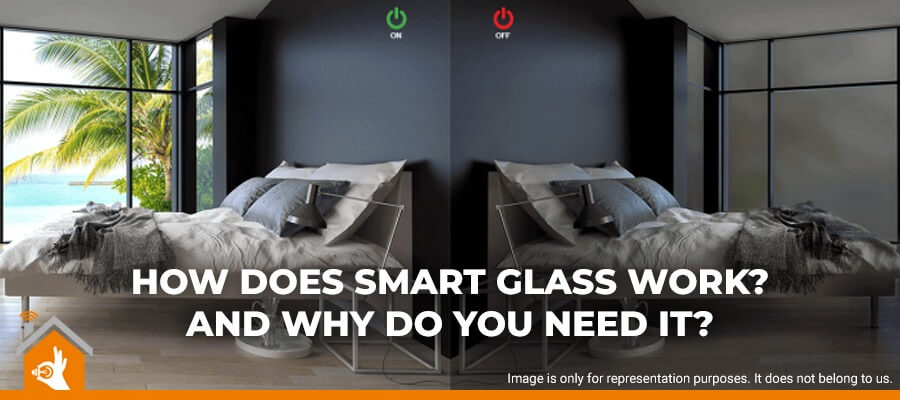With technology taking over the manual work, everything is required to be smart. Be it the phone or your house. The technological advancement is offering comfort and making us push our boundaries to explore more and more facilities. One such exploration is smart glasses. I am not referring the eyeglasses here; I am referring to the glasses we use in our houses, offices and buildings. The concept of smart glass is not new though it is something which is valued since the recent past. If you recall, in earlier times there use to be sunglasses, which will get automatically dark when you get exposed to sun rays. This is a kind of glasses we can refer to smart glasses, which get adjusted and give you results as per requirement.
With the evolution and more technological advancements now we have glasses for buildings and houses, which when switched-on can get opaque or transparent as per our momentary need. Smart glass technology is a real blessing in today’s time. It offers the required amount of privacy when needed and views when desired and all this at a push of a button. And if your house is equipped to be a smart house, then it offers comfort like never before. With the increasing density of population, privacy has taken a back seat. The homes are adjacent to each other & sharing of walls, leaves with no personal space. In such times one can rely on these smart glasses. The option of smart glass works best when you have open-to-sky space, and you want sunlight, yet when you want and not all the time.
Let us understand the concept and types of smart glasses in detail. There are primarily two types of smart glasses; active & passive. Active smart glass requires external power to change the glass clarity, whereas, in the passive glass, it works on its own. The fascination lies more with active glasses, as they are operated at human wish, whereas passive glasses operations are not at a snap. In-depth understanding about the technical aspects of smart glass, the active glass segment has three types of technology; (i) Polymer Dispersed Liquid Crystal (PDLC) (ii) Suspended Particle Device (SPD) & (iii) Electrochromic (EC). Whereas the passive smart glass has two types; i) Photochromic & ii) Thermochromic.
The PDLC types of glasses are suitable for indoor or domestic use. They are also available in colours & patterns to enhance the beauty of the place. PDLC technology changes the glass from opaque to transparent in minuscule seconds. The transparent glass can offer you the view and converting it into opaque offers you privacy. These glasses are also used as a projector screen when they are in opaque mode. Mentioning technically about PDLC, its films contains liquid crystals, which has characteristics of both liquid and solid compounds, which are dispersed into a polymer to switch the glass from transparent to opaque & vice-e-versa.
While PDLC is versatile in application, SPD diversified. SPD is ideal for exterior elevations. It offers less privacy in comparison to PDLC as it does not convert the glass opaque completely. Unlike PDLC, SPD has only minuscule solid particles which when suspended in liquid & coated between layers of PET-ITO, it blocks 99% of incoming light.
Read More – Automating Your Home Does Not Cost a Fortune
Electrochromic uses two-electrode to drive ionized particles from transparent glass to opaque. When electrodes are used, it does not require a constant power supply. This self-transforming technology also impacts the speed of transformation from transparent to opaque.
The application generally happens in two ways by laminating or retrofitting, depending on the technology the glass has adopted. Everything comes with a price tag, and so does style and comfort. If you are looking to embrace the concept of the smart house or smart glass reach us on our website, and our expert will get in touch with you to understand your requirement and suggest you with the best suitable option.

Leave a Reply